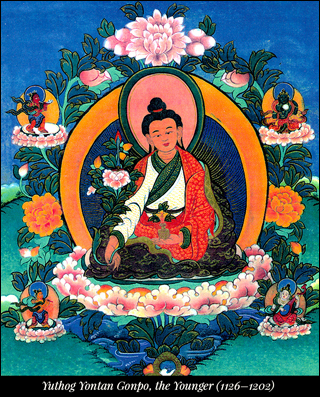
“Tibetan medicine asserts that all suffering – including illness – ultimately results from ignorance (Tib. Ma Rigpa: Skt. Avidyā). Education is a powerful remedy for reducing ignorance and its effects. The goal of this site, therefore, is to provide accurate information – based on decades of study and clinical practice – that can benefit all those who are interested in Tibetan medicine, and what it teaches about health and the causes of illness.”
– Eliot Tokar
Since 1998 Tibetanmedicine.com has provided a clear accessible explanation of Tibetan medicine’s theory and clinical practice from a clinical practitioner’s perspective. The site has additionally presented information regarding broader issues facing Tibetan medicine as well as other forms of traditional medicine as they encounter the modern world and the effects of globalization, medical integration, etc. Fortunately, over the past few years other sites devoted to this subject and written by practitioners of our discipline have appeared adding to the information that is available online. Tibetanmedicine.com will continue to address how we can achieve health in body, mind and spirit as it is embodied in our Tibetan medicine (Sowa Rigpa; གསོ་བ་རིག་པ) tradition.

HISTORY
By integrating knowledge from several traditional medical systems, Tibetans created an approach to medical science drawn from thousands of years of both clinical practice and systematic study regarding the nature of health and the treatment of illness.
Centuries ago, before Buddhism entered Tibet, Tibetans possessed a degree of medical knowledge and literature, and practiced the Bön religion. According to traditional sources, in the beginning of the 4th century new ideas regarding medicine began to enter the country from India. During the 7th and 8th centuries as Buddhism was introduced to Tibet – and then established as the country’s official religion – medical knowledge from the Indian Vedas in the form of what is now called Ayurvedic medicine was also introduced.
In the 8th century the Tibetan government began sponsoring conferences where doctors skilled in the medical systems of India, Persia, Greece and China presented and debated their ideas regarding health and the treatment of illness. Those with superior understanding of medicine and abilities in the diagnosis and treatment of illness were invited to stay and contribute to the country’s medical knowledge base. In the 11th century, this knowledge was codified into a unique system. The Four Medical Tantras (rGyu-bZhi; རྒྱུད་བཞི) – thought to have been originally compiled by Yuthog Yontan Gonpo, the Younger (1126–1202) – were established as the basic texts of Tibetan medicine, containing the principals of [mind-body] medicine, imbued with key influences from the Buddhist tantras.
The resulting holistic and ecologically-minded medical system acknowledged how health and illness resulted from the interdependence of mind and body; the laws of nature, and an individual’s ability to understand and achieve balance with the natural environment; and a spiritual understanding of the nature of existence.
Tibetan medicine training occurred throughout the centuries, and until today, both via family and master/disciple lineages as well as in Tibetan medical colleges. In 1696 a great proponent and scholar of Tibetan medicine, Desi Sangye Gyatso (1653–1705), the regent of the 5th Dalai Lama, founded a monastic school of Tibetan medicine, Chagpori, on a hill opposite the Potala Palace in Lhasa, Tibet. In 1916, Khyenrab Norbu (1882-1962), physician to the 13th Dalai Lama, created a lay college of Tibetan medicine, the Mentseekhang, in Lhasa, Tibet. In 1961, the 14th Dalai Lama reestablished the Mentseekhang in Himachal Pradesh, India. In 1996, Dr. Trogawa Rinpoche reestablished a school for the Chagpori tradition, the Chagpori Tibetan Medical Institute in West Bengal, India. There are additionally schools of Tibetan medicine, as well as medical apprenticeships occurring throughout the Himalayan region. Schools can be found in places such as Kathmandu and in the Mustang district, Nepal; Thimphu, Bhutan; Ladakh, India; Varanasi, India and of course in several regions in Tibet such as in Lhasa and in the Qinghai Province (historically, the Amdo region of Eastern Tibet), PRC.
Book IN-PERSON appointments in New York City or TELEMEDICINE appointments from any location.

